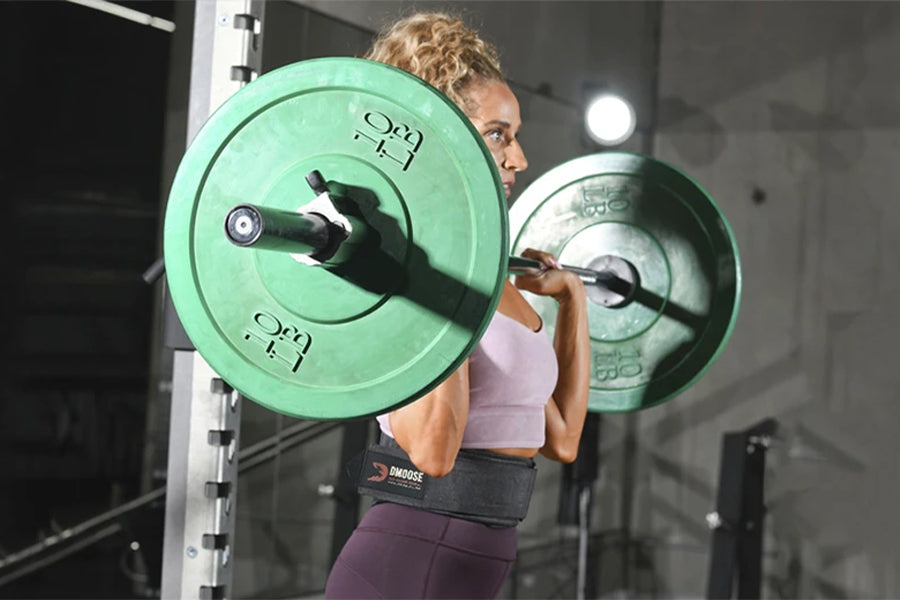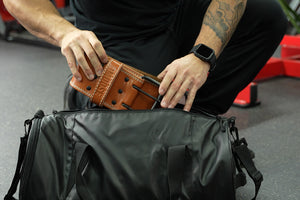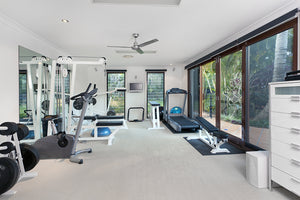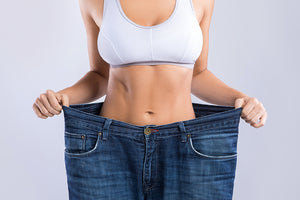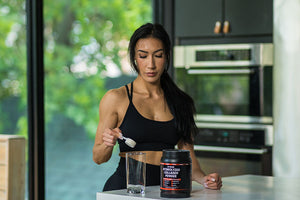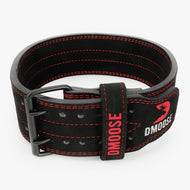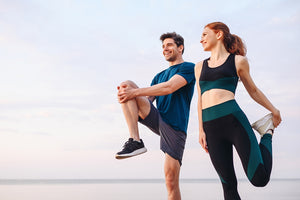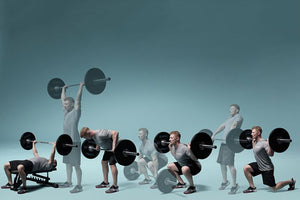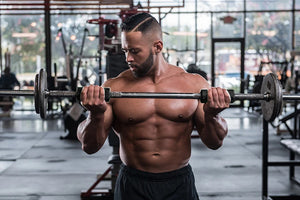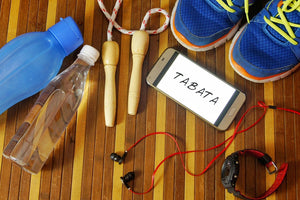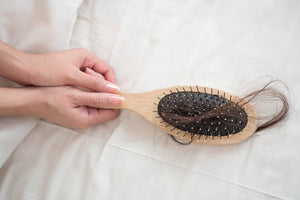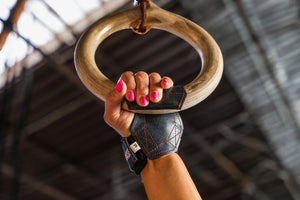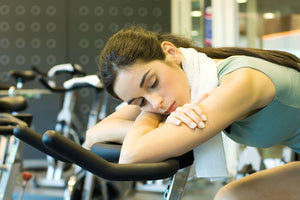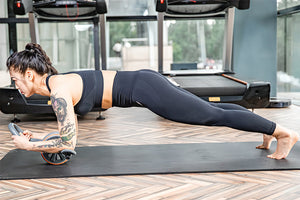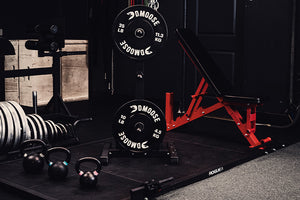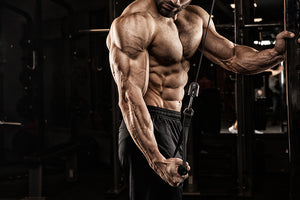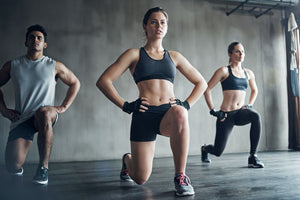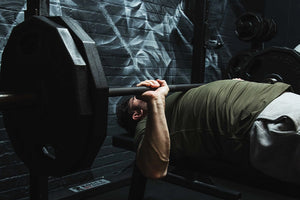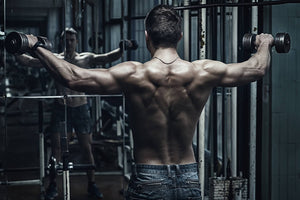Weight lifting belts have been one of the most controversial gym gears for a long time now. Some people have a misconception that these belts can help them lift heavier weights, whereas others consider wearing a belt as cheating and believe it to be an insult for all the lifters.
Let me settle this debate for you once and for all. Weight lifting belts are used to reduce stress and provide support to your lower back and core muscle while lifting. Wearing these belts does not mean that they'll help you lift heavier weights, but they will protect your spine from getting seriously injured.
Weight lifting belts are worn around your trunk while you're slightly holding your breath. Once you've tightened the buckle, breathe and expand into the belt. This will help you tighten the torso properly and stabilize your back to lift weights without getting injured.
How Do Weight Lifting Belts Work?

Knowing how weight lifting belts support and protect your spine from injuries while lifting will enable you to understand how necessary this gym gear is when you're lifting heavyweights.
Generally, our torso is very soft, which allows us to move it back and forth and even twist easily. Now, this soft spongy core might work for you throughout the day, but when you're lifting heavy weights, you need to have a strong core so you don't collapse while squatting.
To achieve a firm torso, you need to brace it.
Imagine a time when you were lifting a heavy box or pushing a heavy object across the room. Remember how you tightened your torso and held your breath so you could exert force? This is what we call bracing the core.
Bracing is tightening your torso so your core can exert pressure when you are lifting weights. Bracing helps increase the intra-abdominal pressure, making it relatively easier for the lifters to lift weights without getting injured.
Weight lifting belts prompt your core muscles to harden so you can lift heavy weights easily.
Benefits of Weight Lifting Belts
Here are the top four benefits of wearing a weightlifting belt:
1. Improves Spinal Stability
When lifting heavy weights, the lifter needs to ensure a tight core. Weight lifting belts press on the core, indicating the muscles to harden. When the torso tightens, the spine stabilizes, and the intra-abdominal pressure rises, helping you to lift heavy weights easily.
2. Promotes Muscle Growth
Wearing a belt helps you support your spine and perform your lifting exercises with your legs and not your back. It helps activate and work up hamstrings and quadriceps muscles in your lower body, leading to better muscle growth and benefitting the lifter in the long run.
3. Prevents Injuries
When you're lifting heavy weights while exercising deadlifts and bench press etc., there are high chances of damaging your spine. Wearing a weight lifting belt ensures that you stand up with a straight posture and provide your spine with the support it requires, so you don't end up getting injured.
4. More Reps
According to the research, it was found that people who wear weight-lifting belts feel more comfortable and protected when exercising. This easiness during lifting leads to improved performance and better results.
Weight Lifting With Lifting Belts

Weight lifting belts are not the regular belts that you can strap on and start training. These belts are made to support your spine and need to be worn properly to prove beneficial for you.
Here is how you should wear these:
- Open up the belt and the Velcro strap
- While standing straight, put the wider and thicker side of the belt on your back
- Hold your breath in, tighten the buckle, and re-stick the Velcro strap
- Exhale and expand into the belt, tighten the core, and you're all set to lift.
Pro tip: Make sure your belt is tight enough to support your back but not too tight that you end up hurting yourself. There should be enough room for you to slide your index finger at the back of the belt, so you can breathe out, creating tension in the core and bracing it properly.
1. Deadlifts

Deadlifts are one of the few exercises that engage every muscle of your body; from your ankles to your neck, every bone feels the tension when lifting heavyweights. This is why you must perform the exercise properly and use weight lifting hooks and straps for heavier weights, or you will end up getting hurt.
- Step up to the bar with your feet open shoulder-width apart and toes crossing from below the bar.
- Bend down, keeping your spine long and straight and hips below your shoulder height
- Hold the bar with an overhand grip; knuckles facing outwards
- Exhale and brace your core and stand up long and tall while squeezing your glutes.
- Ensure that you are standing up straight and not leaning back
- Return to the original position and put the bar down, touching the floor to complete the rep.
2. Squat

Weighted squats are the best way to work up your gluteus maximus, hip flexors, and quadriceps. If they are performed correctly, it can be the safest exercise in your strength training regime.
- Place a barbell squat pad on the bars, get under it, take a deep breath to brace the belt, and lift it on your shoulders.
- Exhale and take two steps back from the barbell stand and re-stabilize yourself.
- Take a deep breath and exhale enough in the belt to create the torso tension and brace your core tightly
- Standing with your feet more than shoulder-width apart, slowly lower down your hips until your thighs are parallel to the floor
- Stand back up and return to the original position, counting it as one rep.
- Do not exhale your breath until you're past the sitting position, or else you will lose the tension in the torso and fail the exercise.
3. Bench Press

The bench press is known to work up the lifters' pectoral muscles, shoulders, and arms. According to the research, using weight lifting belts for bench press helps keep your obliques strong, leading to stabilizing your serratus anterior and your overall shoulder position so that you can perform a perfect bench press.
- Wear the weight lifting belt on your trunk and lie on your back on a adjustable bench
- Make sure your feet are firmly set on the floor and your hips are resting on the bench throughout
- Lift the bar off of the barbell rack, bend your elbows on the side and slowly lower the bar on your chest
- Take a deep breath and brace your torso
- Push your feet on the ground as you lift the bar, and then slowly lower it down. This will count as one rep.
- Do not exhale until you've lowered the bar down so you can maintain the tension in your torso, and execute the perfect bench press without stressing your spine.
4. Clean and Jerk
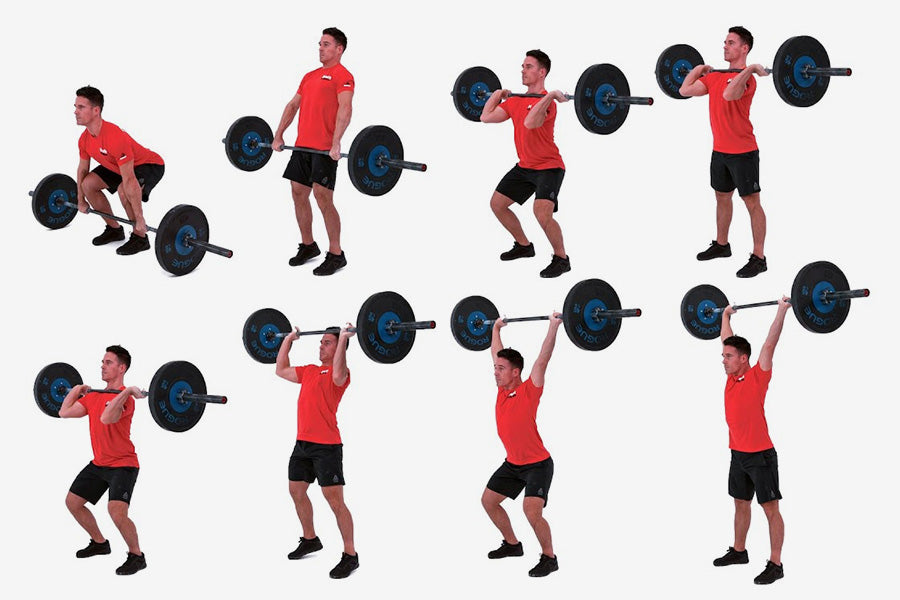
Clean and jerk are some of the most difficult exercises when it comes to weight lifting. This exercise works your glutes, hamstrings, quadriceps, biceps, triceps, and core. It would be best to use weight lifting hooks or wrist wraps when lifting heavyweight, so you don't end up hurting yourself.
- Position yourself by bending and holding the bar from the top with your knuckles facing outwards.
- Keep your hips bent below the shoulders, chest up and tight, head straight, and spine long and tall.
- Take a long deep breath and brace your core. Lift the bar till your thigh, pushing it over and jumping to power through; lift the bar on your shoulders, doing a front squat.
- Once the bar is on your shoulders, stand up straight.
- Exhale and re-stabilize yourself, completing half part of your exercise.
- Again, take a deep breath and brace your torso against the belt
- Jump to power through and lift the bar over your head
- Hold for two to three seconds and slowly bring it down with a front squat
- Then lower it down to your thighs and lastly put the bar back on the floor
- This completes your clean and jerk; make sure to keep your torso tight to stabilize your spine.
5. Overhead Press

Powerlifters practice overhead press to work out their total body, building strength and power. It works core muscles, and legs stabilize the weights while the shoulders, chest, and arms lift the bar over your head.
- Stand shoulder-width apart and hold the barbell with your knuckles inwards and facing towards you.
- Put the bar on your chest and keep the elbows forward
- Take a deep breath and brace your torso
- Squeeze your glutes, back straight, and lift the bar over your head
- Keep your hips and knees locked while you lift.
- Tilt your head slightly forward when lifting the bar above. Raise the bar high enough until your elbows are locked
- Hold this position for two seconds and exhale
- Take a deep breath again and lower down the bar, resting it on your chest, completing one rep.
- Perform three to eight reps for best results.
TRENDING ARTICLES
Common Weight Lifting Belt Mistakes
Many people use weight lifting belts and feel it makes no difference for them. This is because they are unable to use it properly and are making mistakes while using it. Here are a few of the most common mistakes people tend to make when using lifting belts.
- The first mistake that people make is using weight-lifting belts even when they don't need one. Weight lifting belts are used for deadlifts, weighted squats, overhead press or bench press, etc. If you're performing exercises that use less than 85% of one-repetition maximum (1RM), you don't need to use a weight lifting belt.
- Let's suppose you are doing the exercises that require you to wear a lifting belt, then the next thing to check for is the type of belt you're wearing.
Weight lifting belts do not have to be broad from the backside because they are designed to support your torso, build intra-abdominal pressure, and not support your lower back. Make sure you're buying the right type of belt. - Thirdly, if the people have the right belt and do need to wear it, the third most common mistake they make is how they are wearing it.
Weight lifting belts are not like other belts that you can strap on and start lifting. You have to wear it properly on your trunk so that you can brace it properly. As mentioned above, the belt needs to be tightened properly to build up strength in your torso and stabilize your spine. - Lastly, people tend to wear belts too tight, making them uncomfortable to wear. The belts are supposed to be tight but not too tight. When you've strapped on the belt, you should be able to get your hand in between your stomach and the belt. You can also check the tightness by placing your index finger at the back, between your back and the belt.
If your belt passes these tests, then you've strapped it on perfectly.
How to Buy the Perfect Weight Lifting Belt
There are various types of weight lifting belts available in the market. Before you go out searching for the perfect belt, let me help you out with the types of belts available and what the perfect belt will look like.
1. Power Lifting Belt for Weight Lifting

Powerlifting belts are meant to be a little rigid and tough and have a constant width. Using 4-inch wide and 10mm thick belts will give you the best support and comfort when exercising. They have a double prong with multiple adjustment holes for achieving the perfect fit.
These belts give a lot of internal pressure, giving you the added stability so you can lift heavier weights without damaging your spine. Furthermore, the heavy-duty stitching on the belt and the genuine leather guarantees durability, making them the perfect life-long investment.

10MM Weightlifting Belt
Experience unmatched support with DMoose's 10mm Weight Lifting Buckle Belt. Crafted from genuine leather, it's perfect for boosting performance in weightlifting and powerlifting. Secure your gains today!
2. Neoprene Weight Lifting Belt

These neoprene weight lifting belts help you to enjoy your training sessions comfortably without worrying about your back. The 6inch wide lumbar support protects your back while keeping your torso tight.
The neoprene material makes the belt breathable, and the strong Velcro strap ensures ease in strapping it on and off. Lastly, the heavy-duty stitching and metal rings ensure that the lifting belts last you for a very long time and do not give up on you when you're lifting heavy weights at the gym.
3. Leather Weight Lifting Belt for Weight Training

Lastly, we have leather weight lifting belts for weight training. These belts are made with genuine leather and heavy-duty stitching, ensuring durability. These belts are narrower at the front and slightly wider from the back with 6inches thick padding for maximum comfort and support during weight training sessions.
These belts are a mixture of neoprene weight lifting belts and powerlifting belts. The double prong with coated metal ensures security, and the eight holes on the strap allow you to perfectly tighten the belt on your trunk so you can lift weights without fearing the belt slipping off.
Conclusion
Weight lifting belts are the perfect and the simplest tools that can help you build up the intra-abdominal pressure and stabilize your torso so you can lift heavy weights without injuring your spine. These belts come in various shapes and sizes, so you can choose the one that fits your criteria perfectly and helps you brace your core to exert all your force when lifting heavyweights.
Lastly, if the belts are strapped on properly and are used when needed, they can be very beneficial and help you level up your weight lifting games and remove all hindrances and plateaus that are stopping you from achieving the perfect body.
Article Sources
- Harman, Everett A., et al. Effects of a Belt on Intra-Abdominal Pressure during Weight Lifting. ARMY RESEARCH INST OF ENVIRONMENTAL MEDICINE NATICK MA, 1 Mar. 1988. apps.dtic.mil, https://apps.dtic.mil/sti/citations/ADA193783.
- Harman, Everett A., et al. Effects of a Belt on Intra-Abdominal Pressure during Weight Lifting. ARMY RESEARCH INST OF ENVIRONMENTAL MEDICINE NATICK MA, 1 Mar. 1988. apps.dtic.mil, https://apps.dtic.mil/sti/citations/ADA193783.
- Warren, L. P., Appling, S., Oladehin, A., & Griffin, J. (2001). Effect of Soft Lumbar Support Belt on Abdominal Oblique Muscle Activity in Nonimpaired Adults During Squat Lifting. Journal of Orthopaedic & Sports Physical Therapy, 31(6), 316–323. https://doi.org/10.2519/jospt.2001.31.6.316
- Finnie, Steven B., et al. ‘Weight Lifting Belt Use Patterns Among a Population of Health Club Members’: Journal of Strength and Conditioning Research, vol. 17, no. 3, Aug. 2003, pp. 498–502. DOI.org (Crossref), https://doi.org/10.1519/00124278-200308000-00012.
- LANDER, J. E., SIMONTON, R. L., & GIACOBBE, J. K. F. (1990). The effectiveness of weight-belts during the squat exercise. Medicine & Science in Sports & Exercise, 22(1), 117???126. https://doi.org/10.1249/00005768-199002000-00019
- Lander, J. E., et al. ‘The Effectiveness of Weight-Belts during Multiple Repetitions of the Squat Exercise’. Medicine and Science in Sports and Exercise, vol. 24, no. 5, May 1992, pp. 603–09.
- Kaur, Navpreet, et al. ‘Effects of Lower Extremity and Trunk Muscles Recruitment on Serratus Anterior Muscle Activation in Healthy Male Adults’. International Journal of Sports Physical Therapy, vol. 9, no. 7, Dec. 2014, pp. 924–37.


